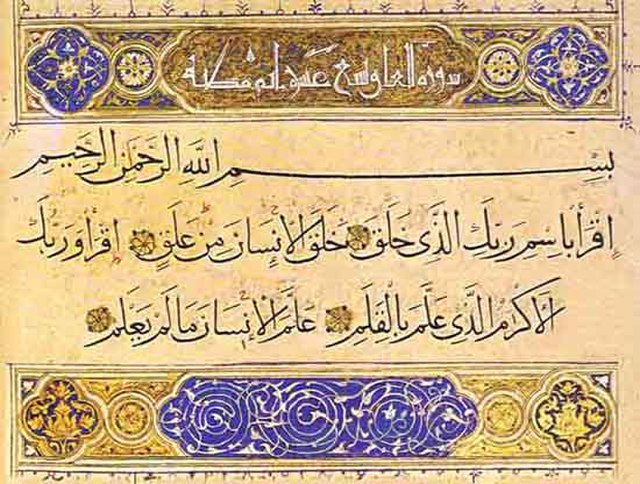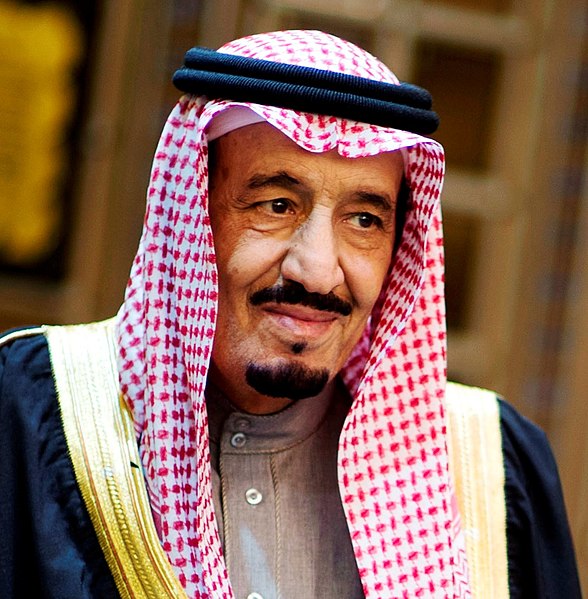The politics of Saudi Arabia takes place in the context of a unitary absolute monarchy, along traditional Islamist lines, where the King is both the head of state and government. Decisions are, to a large extent, made on the basis of consultation among the King, the Council of Ministers, Islamic scholars, tribal leaders and other traditional elites of the society. Saudi government is authoritarian, although some analysts have characterized the government of Mohammed bin Salman as totalitarian. The Crown Prince and Prime Minister of Saudi Arabia, Mohammed bin Salman, is the de facto ruler of Saudi Arabia. Under his rule, he has centralized policymaking, purged competing political elites, and dismantled pre-existing power-sharing dynamics.
Verses from the Qur'an, the official constitution of the country
King Salman of Saudi Arabia (r. 2015–present)
The Consultative Assembly at Al Yamamah Palace in Riyadh
Saudi Arabia, officially the Kingdom of Saudi Arabia (KSA), is a country in West Asia and the Middle East. It covers the bulk of the Arabian Peninsula and has a land area of about 2150000 km2, making it the fifth-largest country in Asia and the largest in the Middle East. It is bordered by the Red Sea to the west; Jordan, Iraq, and Kuwait to the north; the Persian Gulf, Qatar and the United Arab Emirates to the east; Oman to the southeast; and Yemen to the south. Bahrain is an island country off its east coast. The Gulf of Aqaba in the northwest separates Saudi Arabia from Egypt and Israel. Saudi Arabia is the only country with a coastline along both the Red Sea and the Persian Gulf, and most of its terrain consists of arid desert, lowland, steppe, and mountains. The capital and largest city is Riyadh; the kingdom also hosts Islam's two holiest cities of Mecca and Medina.

Anthropomorphic stela (4th millennium BC), sandstone, 57x27 cm, from El-Maakir-Qaryat al-Kaafa (National Museum of Saudi Arabia, Riyadh)
The "Worshipping Servant" statue (2500 BC), above one metre (3 ft 3 in) in height, is much taller than any possible Mesopotamian or Harappan models. Photo courtesy of the National Museum of Korea.
Qaṣr Al-Farīd, the largest of the 131 rock-cut monumental tombs built from the 1st century BC to the 1st century AD, with their elaborately ornamented façades, at the extensive ancient Nabatean archaeological site of Hegra located in the area of Al-'Ula within Al Madinah Region in the Hejaz. A UNESCO World Heritage Site since 2008.
Colossal statue from Al-'Ula in the Hejaz (6th–4th century BC), it followed the standardized artistic sculpting of the Lihyanite kingdom. The original statue was painted with white. (Louvre Museum, Paris)







